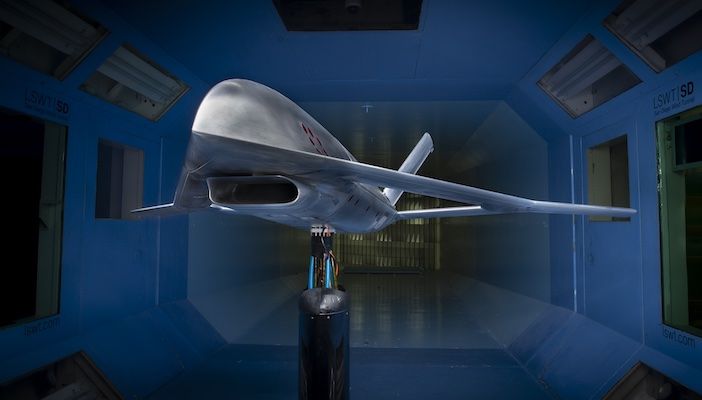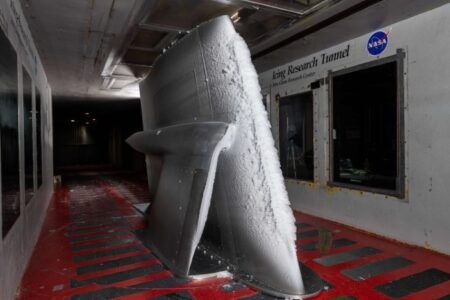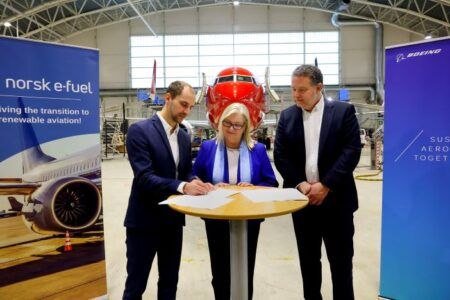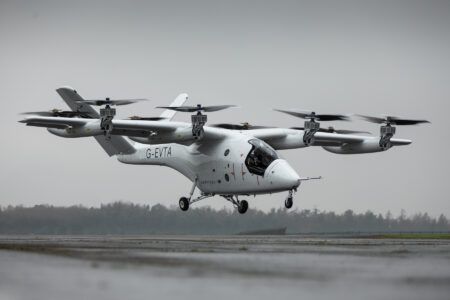Aurora Flight Sciences has completed wind tunnel testing its design for DARPA’s Active Flow Control demonstrator X-Plane in the USA.
Defense Advanced Research Projects Agency (DARPA)’s Control of Revolutionary Aircraft with Novel Effectors (CRANE) program aims to show how active flow control (AFC) can be used to reduce the cost and weight of aircraft while improving performance and reliability.
AFC is an aerodynamic technique that uses actuators and effectors to alter the flow of air over an aircraft to change its course and speed, instead of using control surfaces such as ailerons, rudders, and flaps.
AFC is different from passive control features, such as vortex generators on a wing for flow separation control or chevrons on an exhaust for noise mitigation, which can be seen as being always ‘on’.
The CRANE program will culminate in the flight testing of a novel X-Plane, developed by Aurora and Lockheed Martin, to demonstrate the quantifiable benefits of using AFC. CRANE’s X-plane is using testing several AFC effects including flight control at tactical speeds and performance enhancement across the flight envelope.
Other companies involved in the CRANE program include BAE Systems, which is producing another AFC X-Plane design and Georgia Tech Research Corporation, which is developing AFC design software.
Wind tunnel testing
Aurora engineers conducted the tests using a 25% scale model over four weeks at a wind tunnel facility in San Diego, California. In addition to 11 movable conventional control surfaces, the model featured 14 AFC banks with eight fully independent controllable AFC air supply channels.
Over 14,000 data points were collected, including 8,860 AFC control power points, forming the foundation for a flight-quality aerodynamic database to use in future program phases.
Per Beith, president and CEO of Aurora Flight Sciences said, “Aurora’s work on CRANE continues our history of proving ground-breaking technologies from concept to flight test. Through the DARPA CRANE program, Aurora is advancing AFC technology for application to next generation aircraft.”
Aurora is a subsidiary of Boeing which conducts aerospace R&D. The test team consisted of Aurora and Boeing engineers with expertise in aerodynamics, conceptual design engineering, and test and evaluation
Laurette Lahey, senior director of Boeing Research and Technology, Flight and Vehicle Technology said, “Leveraging Boeing’s targeted investments in active flow control, our advancements on the CRANE program aim to further validate the technology’s potential benefits to improve efficiency and performance for both commercial and military aircraft.”
The wind tunnel test data has been incorporated into vehicle models to characterize AFC performance across the operational envelope and continue progressing design development and is being used as a foundation for developing flight control laws using AFC as a primary control effector, Aurora said.
Related Stories
Active Flow Control’s potential to improve flight performance





